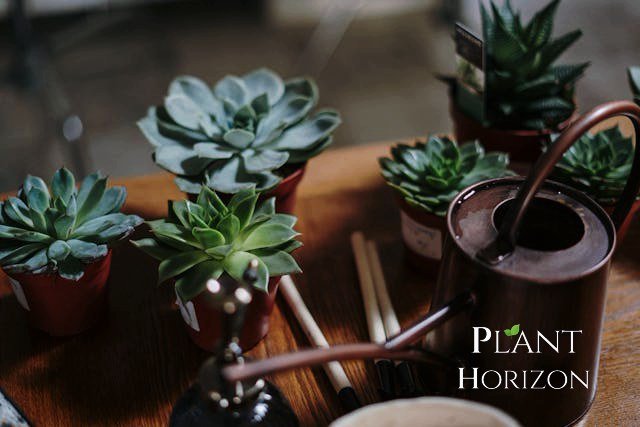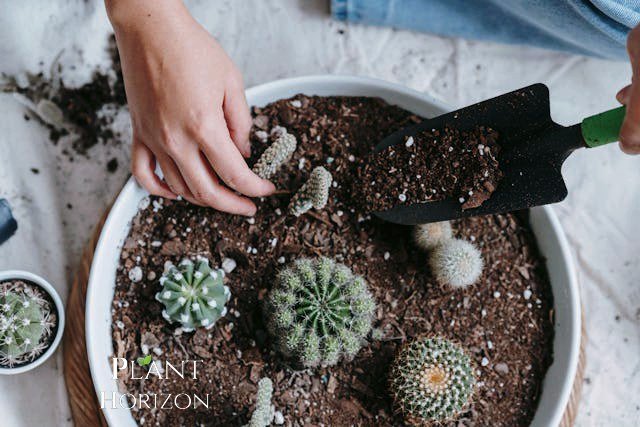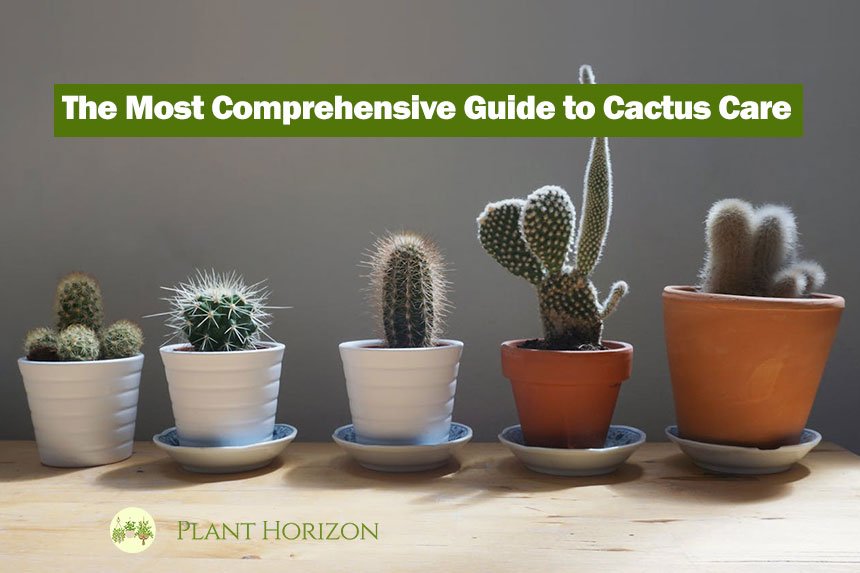In recent years, the variety of cacti used in landscape design and green spaces has significantly increased. In regions with favorable climatic conditions, cacti are among the most commonly chosen plants.
However, cultivating cacti is not an easy task. After purchasing a cactus pot, it is essential to learn proper care techniques to ensure their health and growth.
How to Grow Cacti Indoors?
For several reasons discussed below, indoor spaces are considered ideal for growing cacti. Indoors, you have greater control over temperature, humidity, and light fluctuations, reducing concerns about maintaining beautiful cacti.

Choosing the Best Cactus
When selecting a cactus, consider the environment where it will be placed. This factor greatly influences the cactus’s growth. After reading this guide, you’ll be better equipped to choose a cactus based on proper care requirements!
You should also consider the following:
- Is the room or garden too cold or humid?
- Is there enough space for the cactus to grow?
- How large will the selected cactus grow?
- Does the room or yard receive adequate sunlight?
Before choosing a cactus, observe the room or yard at different times of the day to calculate the total hours of direct sunlight available. Then, list the conditions of your space and search online for cacti that align with these requirements.
By reviewing the characteristics on the cactus’s label and seeking advice from the seller, you can select a plant that matches your home environment.
Different cacti have varying light requirements. While they thrive on sunlight, they do not necessarily need 12 hours of direct sunlight daily. Ideally, place the cactus near a south- or east-facing window where it can receive 4 to 6 hours of sunlight per day.
When selecting a cactus type, it’s better to choose those that do not require full sunlight. Bright-colored succulents need more light and thrive better in moderate outdoor climates. Green succulents, on the other hand, require less light, making them more suitable for indoor environments.
Cacti that receive adequate light often bloom. However, not all cacti need direct sunlight, as excessive exposure can scorch them. Signs of overexposure include pigment loss, or in other words, whitening of the tips of stems and leaves.
If your cactus’s branches stretch toward the light, it indicates insufficient sunlight. In such cases, rotate the cactus periodically to ensure all sides receive light evenly. If providing enough natural light isn’t possible, artificial lighting can be used.
If you notice your plant receiving either too much or too little light, adjust its location to achieve optimal light exposure.
What is the Ideal Temperature for Cacti?
One of the key factors in cactus care is providing the right environmental temperature. Cacti prefer warm and dry climates. However, this doesn’t mean they should be exposed to excessive heat. If you keep cacti outdoors, you’ll need to provide some form of shade to protect them. Options for shading include cloth coverings, umbrellas, or corrugated sheets.
If the environment is too cold, cacti won’t be able to develop roots properly.
For succulent cacti, it is generally better to keep them indoors due to factors such as high temperatures, intense sunlight, and humidity. This ensures their optimal growth and health.
What Type of Pot is Suitable for Cacti and Succulents?
When choosing a pot for cacti or succulents, select one that allows the soil to dry quickly, as this prevents root rot. Ensure the pot has at least one drainage hole at the bottom to facilitate effective drying. The size and breathability of the pot are also critical for cactus health.
Breathable pots, such as clay, terracotta, or ceramic, are ideal. Unglazed clay and ceramic pots are the best options, but plastic pots can also be used. Ceramic and clay pots are heavier, making them stable for larger water-storing cacti. Additionally, they allow even soil drying by promoting airflow. In contrast, plastic pots are lightweight and easy to clean and move. The pot’s shape should be chosen based on the cactus type.
If the pot you choose lacks a drainage hole, you can drill one using a drill and a carbon or ceramic bit. For small pots, one or two holes are sufficient. Apply firm, perpendicular pressure while drilling, but avoid excessive force to prevent cracks or breakage. Practice this technique by drilling small holes in pieces of ceramic or terracotta to build your skill.
To prevent soil from escaping through the holes, you can use a fine mesh or small filters. Proper pot selection and preparation are essential for ensuring the health and longevity of your cactus.
Glass Pots
Although glass pots are aesthetically pleasing, they are not ideal for cacti, as they do not allow the soil to dry properly. This issue is even more critical for succulents. The best choices are terracotta, ceramic, or plastic pots.
When selecting a pot size, choose one that provides sufficient space for growth but is not excessively large. If a succulent’s pot is too big, its roots may grow rapidly, outpacing the plant’s ability to keep up, leading to growth issues.
You typically need about half an inch of extra space for root growth. For example, if your succulent is 1 inch in size, a pot with a 2-inch diameter is ideal. If you plan to include multiple succulents in one pot, consider this spacing carefully. Some cacti have shallow root systems, making tall, narrow pots unsuitable for their needs.
Cacti come in various sizes, shapes, and prices. It is estimated that there are approximately 2,000 types of cacti worldwide, making them not only fascinating but also popular among collectors.
The Giant Saguaro
The saguaro cactus, the largest of its kind, can grow up to 75 feet tall and live for as long as 200 years. (I doubt there’s a pot large enough for this cactus!)
While succulents are generally affordable, saguaros are notably expensive. They are native to the Sonoran Desert in Arizona, much of Baja California, and half of the Sonora region in Mexico. Due to their extremely slow growth rate—about 1 foot every 10 years—saguaros are among the most expensive cacti. The image above showcases a rare, mature saguaro. Buying and selling saguaros is prohibited in many parts of the United States.
Wondering how expensive they are? A large saguaro costs approximately $100 or more per foot. Considering their weight—100 pounds per foot—and their sharp spines, professional assistance is required for planting them, which adds to the cost. For example, a 7-foot saguaro might cost $700 or more, with an additional planting fee ranging from $100 to $200.
Fun Fact: The first arm of a saguaro typically grows when the cactus is about 70 years old and approximately 7 feet tall.
Is Soil Type Important for Cactus Care?

Yes, the type of soil is crucial for cactus care. Special cactus and succulent soil mixes are available in the market, but you can also prepare your own. The soil should be coarse and sandy; for example, you can mix garden soil with sand.
The soil must allow water to evaporate quickly. Otherwise, the roots may become waterlogged, leading to root rot.
During the growing season, it is essential to fertilize cacti and succulents with each watering. However, fertilization is not necessary during their dormant period.
How Much Water Do Cacti Need?
Like light, different types of cacti require varying amounts of water. Always carefully read the care instructions for your specific cactus. To ensure proper watering, check the soil weekly. Some cacti can go up to three weeks without water.
If the soil is dry, water the cactus until the soil is moist but not oversaturated. If the soil is still damp, wait a little longer before watering again. Ensure the soil has dried out completely between watering sessions. If the succulent’s leaves are drying out despite sufficient watering, you can mist the leaves to provide additional humidity.
From April to September, during the flowering season, cacti require more frequent watering. During dormancy, from September to April, they need much less water. Fertilizing at least once annually during the flowering season is also essential for both cacti and succulents.
Can Different Succulents Be Planted Together in One Pot?
We’ve all seen beautiful pictures of mixed succulent arrangements on Pinterest. Here’s how to create your own stunning succulent displays.
Maintaining proper spacing is crucial when placing multiple succulents in one pot, as the care requirements for cacti and succulents differ slightly. If planted too closely, the plants may grow erratically, making watering difficult. Water that pools along the edges of the pot can lead to rotting leaves. A spacing of about half an inch between succulents is ideal and makes watering easier.
One advantage of succulents is their flexibility. Once they start growing, you can easily rearrange them in new patterns, create additional pots, or even give them as gifts to friends.
When Should You Repot a Cactus?
Cacti and succulents generally need repotting annually. While repotting can be challenging, the following tips can simplify the process:
- Choose a pot large enough to last for at least a year without requiring another change. Use a mix of half soil and half sand to ensure good drainage.
- Wear gardening gloves to protect your hands from spines. For extra safety, wrap the plant with newspaper, paper towels, or foam to shield its arms.
- Tilt the pot and gently remove the cactus. If it’s stuck, tap the bottom of the pot to loosen it. If you don’t plan to reuse the pot, breaking it is an option. Inspect the soil for pests or rot.
- Place the cactus in the new pot and add fertilizer, fresh soil, and water.
Annual repotting is essential not only for growth but also to inspect the soil for pests and signs of decay.
How to Deal with Cactus Pests?
Like any plant, cacti and succulents can be affected by pests. Two common ones are fungus gnats and mealybugs:
- Fungus Gnats: Caused by overwatering. To eliminate them, repot the cactus with dry soil.
- Mealybugs: Treat with rubbing alcohol by spraying directly onto the affected areas.
Although pest management and annual repotting may seem time-consuming, they are simple once incorporated into your routine. After the initial setup, cacti require minimal maintenance. Even if you’re away for a week, they’ll be fine. Cultivating cacti and succulents can become an endlessly rewarding hobby.
Frequently Asked Questions
What Causes Cactus Rot?
Unfortunately, rot is a common issue in cacti, often influenced by environmental factors. Common causes include:
- Overwatering
- High humidity
- Overcrowded roots
- Pest infestations
Rot is typically a fungal or bacterial disease. If untreated, it spreads throughout the plant, ultimately destroying it. Rot can occur in any part of the cactus—from the roots to the crown and even the topmost sections.
The most common type of rot occurs where the stem meets the soil. Look for soft, slimy black or brown spots surrounded by yellow and pale green areas.
Root rot is the hardest to detect since it occurs below the soil. The first signs often appear as yellowing and softening of the upper sections of the cactus. If you suspect rot, gently press the area. If it feels firm, it’s not rot. Rot is always accompanied by softness.
How to Save a Rotting Cactus?
If a cactus starts rotting, act quickly to remove all infected areas to prevent the disease from spreading. If left untreated, rot will continue to spread and eventually kill the plant.
Rot progresses rapidly, so immediate action is essential. Follow these steps:
- Prepare sharp cutting tools, such as pruning shears or a knife. Ensure they are clean and disinfected before starting. Wash them thoroughly with soap and water to prevent spreading infection to healthy parts of the cactus. Rewash and dry the tools between cuts, or use rubbing alcohol for quicker sterilization.
- The method to save your cactus depends on where the rot is located:
- If Rot Starts at the Top:
This is easier to manage. Cut away the rotting portion in thin layers until no signs of rot remain. Continue cutting layer by layer until the affected area is completely removed. For outdoor cacti, make the final cut at an angle to prevent water from pooling on the surface, which could lead to new rot. Place the cactus in a dry area, away from rain, until the cut heals. - If Rot Starts at the Bottom:
Saving the plant becomes much harder. The chances of preserving the affected cactus by cutting out the rot are low. Instead, salvage any healthy stems by cutting them off and replanting them in fresh soil. If the stems show signs of rot, follow the same layer-by-layer cutting process. Allow the cut surfaces to heal and dry before replanting.
- If Rot Starts at the Top:
Proper care and swift action can save your cactus from complete decay.
How Much Water Do Cacti Need?
The watering requirements for cacti vary depending on the species and environment. It’s up to you to observe changes in your cactus during watering, fertilizing, propagation, or repotting to understand its specific needs.
A common misconception is that cacti can thrive on neglect and little to no water. In reality, prolonged neglect or insufficient watering can cause their leaves to yellow or lose vibrancy.
General Guidelines for Watering Cacti:
- During the growing season (spring to summer), cacti require regular watering and fertilization. Water them at least once a week during this period, ensuring they don’t completely dry out.
- During dormancy (fall to winter), water cacti only when the soil is completely dry.
Before each watering, check if the soil surface is dry. You can insert a small stick into the soil and remove it; if it comes out dry, your cactus needs water.
Signs of Improper Watering:
- Underwatering: The cactus may appear pale or discolored.
- Overwatering: The cactus may swell unnaturally, a condition that can eventually lead to rot.
Learning to recognize these signs will help you establish the right watering routine for your cactus, keeping it healthy and thriving.
How Much Sunlight Do Cacti Need?
Most cacti require ample sunlight, making them perfect for the brightest and sunniest spots in your home. Placing a cactus near a well-lit window will provide it with the light it craves. To ensure even exposure, rotate the cactus periodically so all sides receive sunlight.
While most cacti enjoy abundant light, not all can tolerate direct sunlight, especially during hot summers. In general, cacti need 10–14 hours of sunlight daily.
- Desert Cacti: Thrive in intense light, which is especially vital in winter. However, if not acclimated to cold, direct sunlight may cause burns.
- Forest Cacti: Prefer ample but indirect light. During summer, moving them outdoors can benefit their growth.
How to Propagate a Cactus?
Propagating cacti through cuttings is one of the easiest methods. To propagate successfully, you’ll need:
- A healthy cactus
- Gloves
- A pot
- Well-draining soil
- A clean, sharp knife
Steps to Propagate:
- Select the Cutting:
- For cacti with pads or leaves, choose the most mature pad.
- For columnar cacti, pick a thinner stem, as it roots faster than thicker stems.
- Cut the Section:
Make a clean, straight cut to remove the chosen segment. - Let It Dry:
Allow the cutting to dry for several days, away from light and soil, until the cut surface forms a callus. - Plant the Cutting:
- Fill a new pot with moist soil.
- Place the cutting upright with its cut end in the soil. If it doesn’t stand firmly, create a support using additional soil.
- During root formation, the cutting uses its internal mineral reserves. Keep the soil slightly moist but never wet. Water lightly every few days.
- Care for the New Plant:
Once roots are established, water and provide sunlight as you would for any other cactus. While roots develop relatively quickly, new stem growth may take up to a year, so patience is key.
Propagation is a rewarding process that adds to your cactus collection and makes for a fulfilling gardening experience.
Which Cacti Are the Most Resilient for Indoor Care?
- Opuntia Albispina (Angel Wing Cactus)
- Requires bright light and moist soil.
- Typically features a mix of green and yellow hues.
- Rat Tail Cactus
- Ideal for hanging near a window with limited space.
- Thrives in direct sunlight and requires regular watering.
- Euphorbia Trigona (African Milk Tree)
- A great choice for beginners, with slow growth and high resilience.
- Plant in well-draining soil and water twice a month.
- Prefers full sun or partial shade and can last for decades with proper care.
- Saguaro Cactus
- Its slow growth makes it suitable as a long-lasting houseplant.
- Provide abundant sunlight and water twice monthly.
- Mammillaria Hahniana (Old Lady Cactus)
- Known for its unique pink crown-like flowers on a healthy plant.
- Plant in sandy soil and water every two weeks; during winter, once a month suffices.
- Requires bright, ample sunlight.
- Astrophytum Myriostigma (Bishop’s Cap Cactus)
- Covered in a white, powdery layer resembling a protective shield against sunlight.
- Water sparingly and expose to plenty of sunlight for its yellow blooms.
- Christmas Cactus
- Features vibrant blooms in red, pink, orange, and white.
- Requires filtered sunlight and consistent watering. Allow the soil to dry slightly between waterings.
- Barrel Cactus
- A highly durable plant that can live for decades.
- Prefers porous, sandy soil and abundant light. Wait for the topsoil to dry completely before watering.
These cacti not only add beauty to your home but are also low-maintenance, making them ideal choices for indoor gardening.










